Truth behind a successful product launch
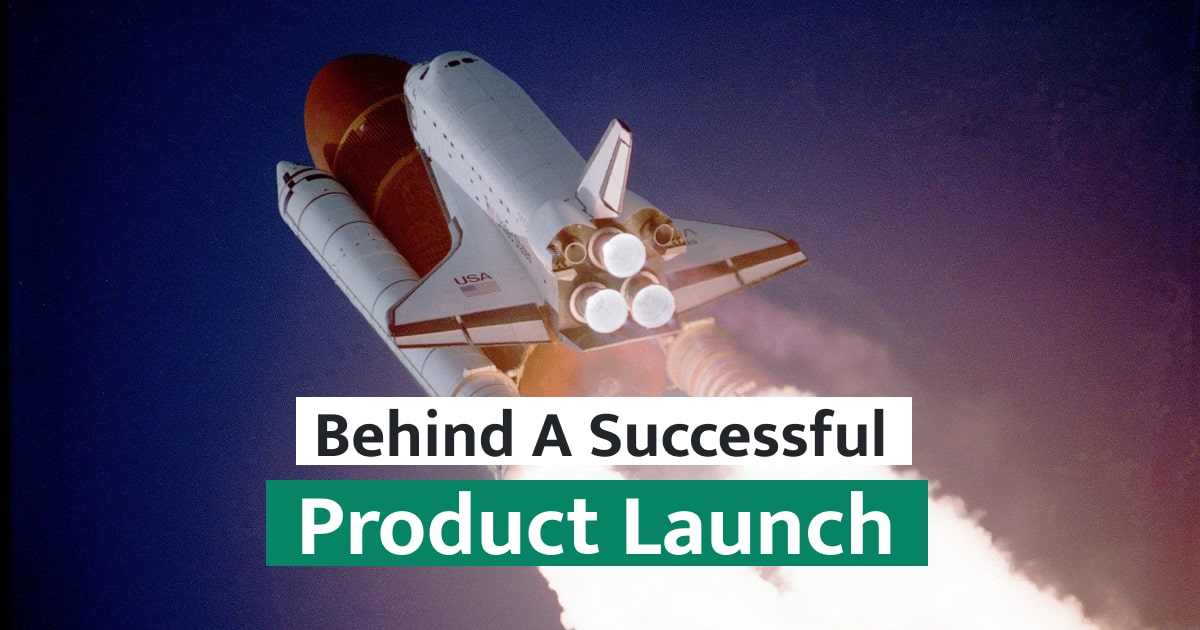
Every founder has to learn how to launch products.
If you do it well, your product gets a good start with testimonials, users, and sometimes even revenue on day 1.
But to learn and understand how to do it right, you'll have to fail multiple times.
I learned the hard way when I was running my venture-backed startup, Toasty, in 2019-2020.
The Toasty story
Let me quickly tell you the story so that you have a full picture of what happened.
I was building this interactive technology for a crowd to use collectively at physical events. Then one day, COVID-19 hit and I was facing the decision to believe in our original vision or to pivot. As there was no way we could return to running physical events shortly, I chose the latter.
For the startup, I raised capital and had a team of 6-8 people. With the pivot, we needed to figure out what to do in the virtual world.
And I made some pretty bad decisions back then.
We didn't know anything about the virtual space, should we focus on video meetings? Virtual events? Community gatherings? We had a lot to learn. So we ran a couple of user interviews and went straight into tweaking our product to fit in the virtual world. It was unsurprisingly a good fit because people were asking for more interactivity during online meetings.
With that vision, we redesigned the website, put on a pricing plan, and went into marketing and selling mode.
It seemed to go well. What went wrong?
We launched the product in a linear way like a production line. We built the product and then started mass marketing. Of course, on the day we officially launched, nothing significant happened. Then for months, we were searching for use cases that our product could fit in.
For the next few months, growth was slow and we never felt that there were any super excited early fans.
That's when I knew I was launching the wrong way.
Building Smaller Products
Since I stopped working on Toasty in late 2020 and became an indie creator, I've been building mini-products myself.
First, I created the Building in Public Definitive Guide, then an email course called Making Twitter Friends. Since it was just me with no capital and no team, I slowed down this time.
I believed truthfully: to go slow is to go faster.
I was working on building my credibility first, and here I figured out what else was needed to increase the success of my launches.
Find Breadcrumbs
If you're generating new ideas in your head every single day, you're doomed.
Back at Toasty, we were pressured into a new environment to build a new product. We had a vision but nothing else. We went straight into building because we had the engineers and designers.
Reflecting on how I created the guide and the email course, the first thing I did was to immerse myself in the community and observe. I paid extra attention to what people talked about, where they needed help, and which of my tweets or articles were doing well.
Here were the breadcrumbs that led me to build Making Twitter Friends.
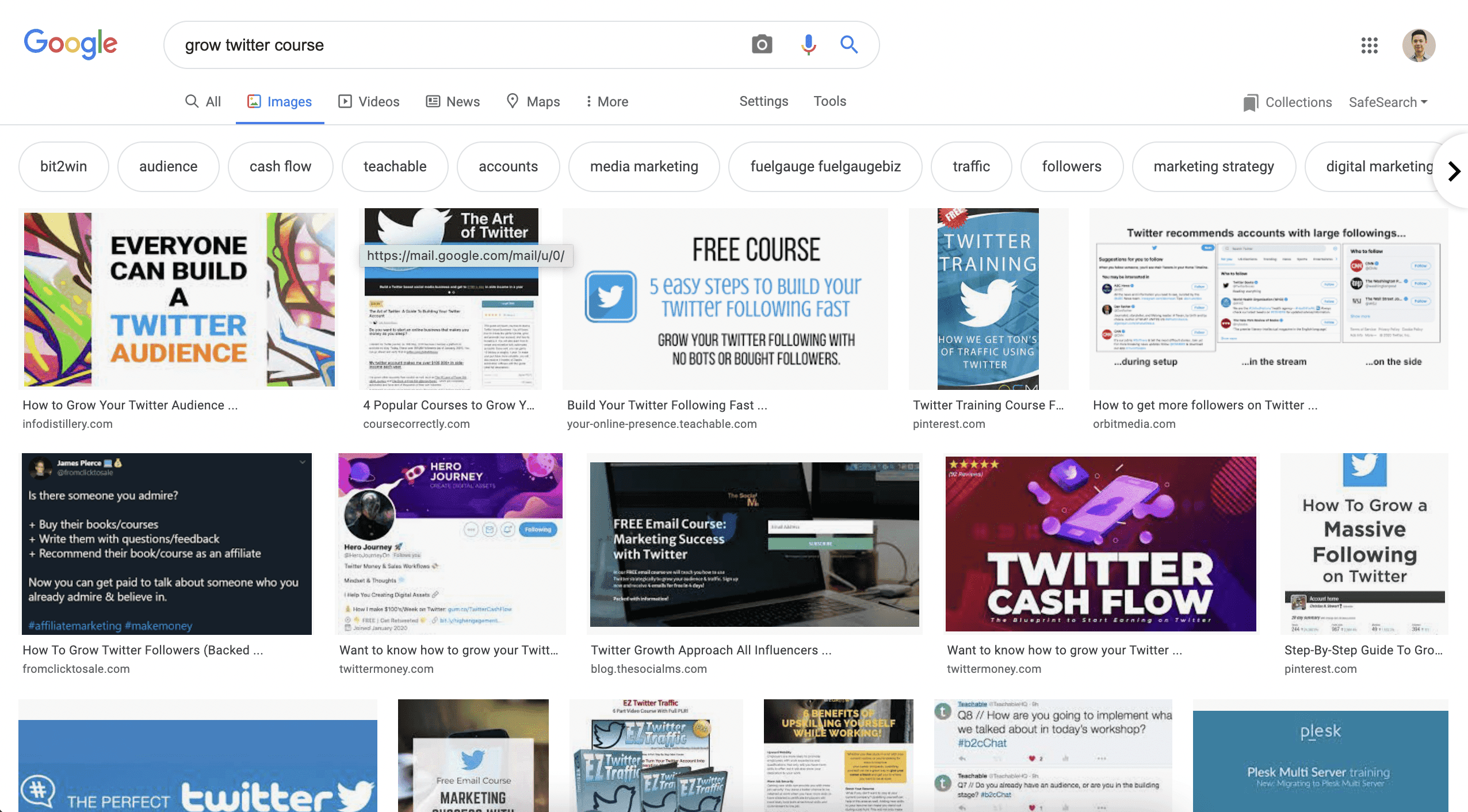
There are lots and lots of courses on Growing Twitter.
There is no shortage of courses on growing Twitter, and I keep seeing more. As my Twitter circle gets bigger, I know that the demand is there.
I haven't taken any of these courses. But, a lot of them seem to focus on the mechanics. What I'm more interested in is how to be personal, make friends, and build relationships. Growing for the sake of growth doesn't interest me.
I wrote an article on growing Twitter using human psychology and I could tell from the page views and subscriber number that people enjoy it very much.
All these data points gave me signals about a potential opportunity. It wasn't 100% validation (as there is no such thing), but I was confident enough that my products would at least benefit a group of people.
On top of helping me build better products, this approach also boosts my self-confidence in being more thoughtful and analytical in the journey.
Never Launch the Day the Product is Done
If your plan is to focus on building and then put it out there when it is done, you're doomed.
At Toasty, we built, we launched, and we got nothing.
The way I created the guide and the email course was very different. I've been using Twitter to make friends and my tweets became my testing ground. Long before my guide was ready, I already talked about it and received interest from people.
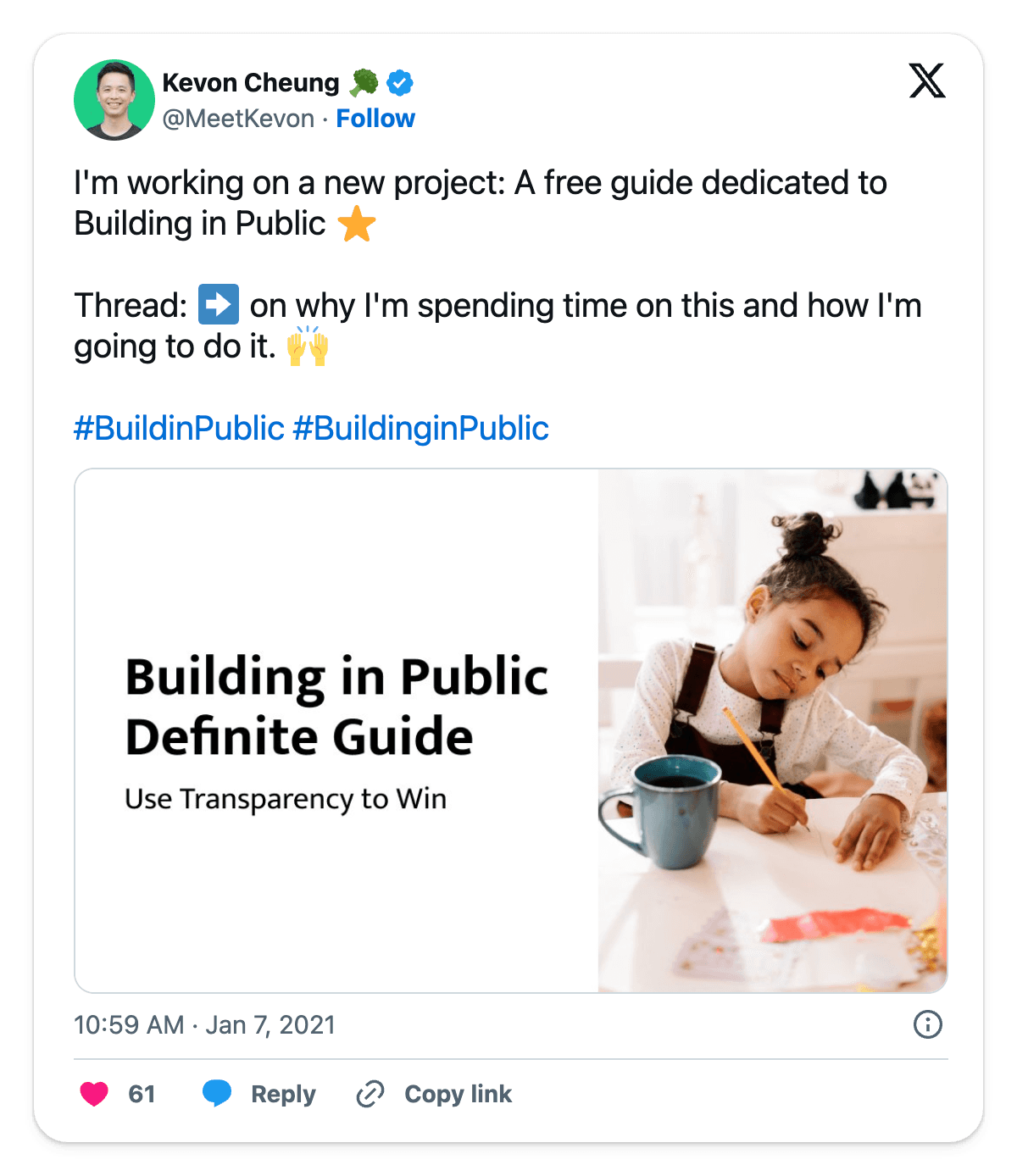
I also tweeted to see if anyone would be interested in helping to review my draft. When they replied, I reached out via DM and got to know them.
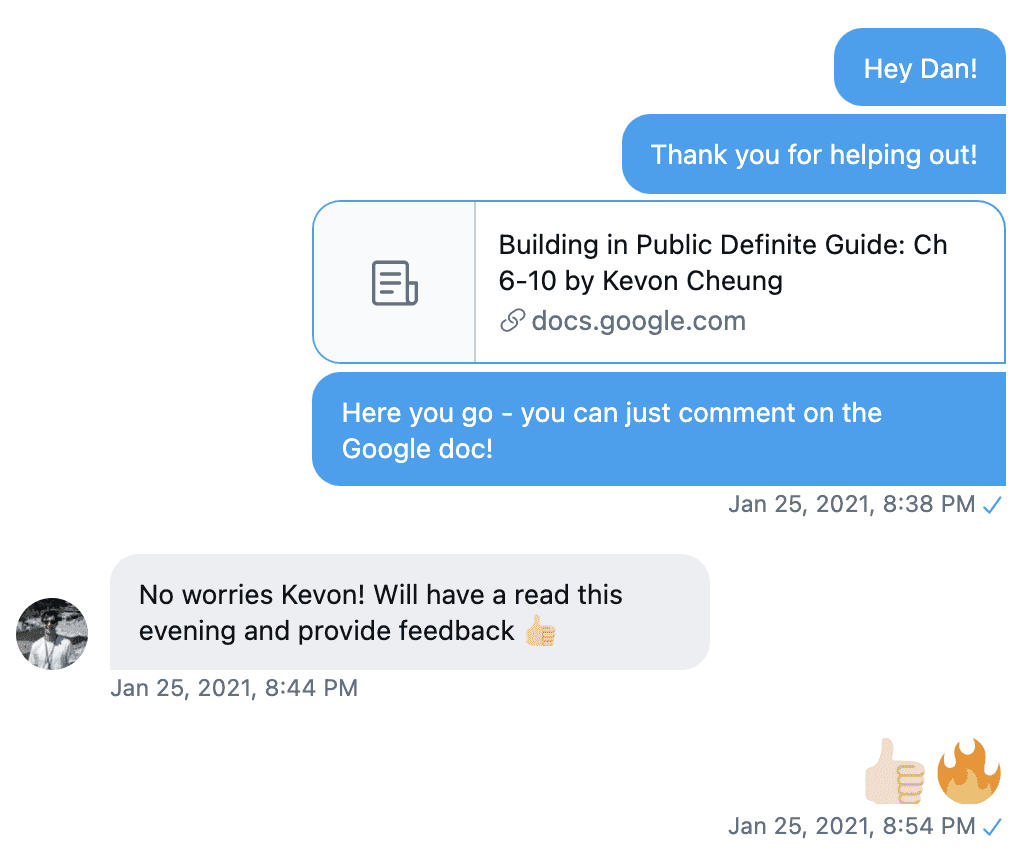
Dan (@DanRoche01) was super helpful.
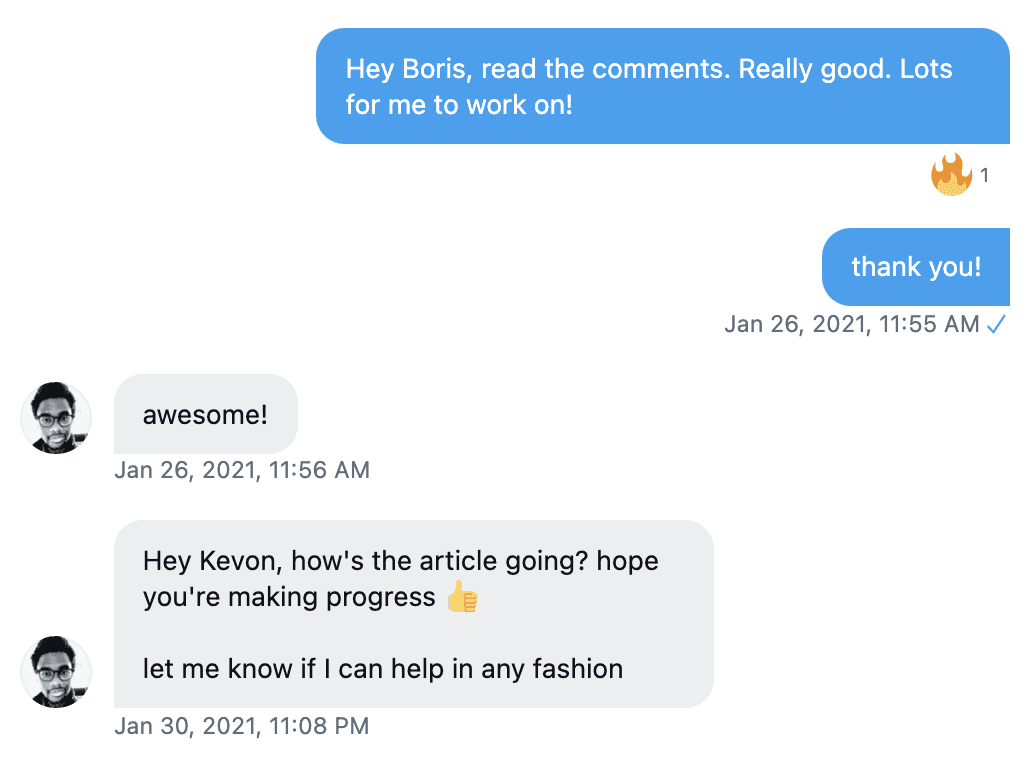
Boris (@BorisTane) was giving me a hand.
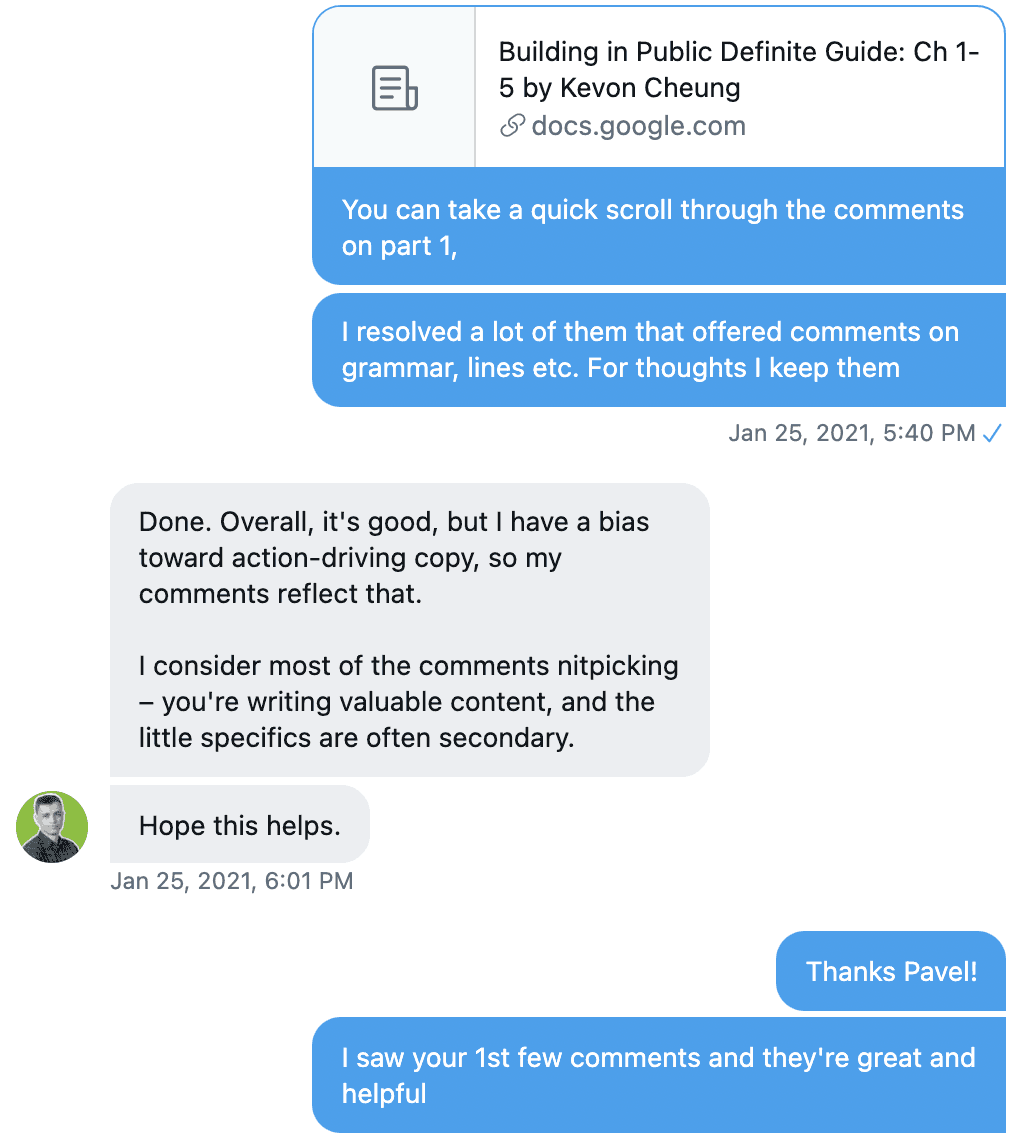
Pavel (@hipavel) even helped read my draft for both part 1 & 2.
They liked the idea and were willing to help, so I took the opportunity to bring them in as early readers. I didn't do that to create exclusivity. I was more interested in getting early feedback to improve the product before it hit the big stage.
This was important because as much as everyone encourages the "ship fast" mentality, I knew the first impression was key. Most of the time, I only get one chance.
With this group of people, other than getting constructive feedback, I was also building relationships through our conversations, and what happened next amazed me.
Don't Underestimate Word of Mouth
If your product has no fans before it launches, you're doomed.
The word "launch" is a little misleading. It refers to the moment you put out something to the world. From launching my products and also watching how people launch on Product Hunt, I figured there is a huge advantage to having a group of people already cheering for you when you "launch".
With the early readers, I was able to get their testimonials to add credibility to my product when it launched. I use Testimonial.
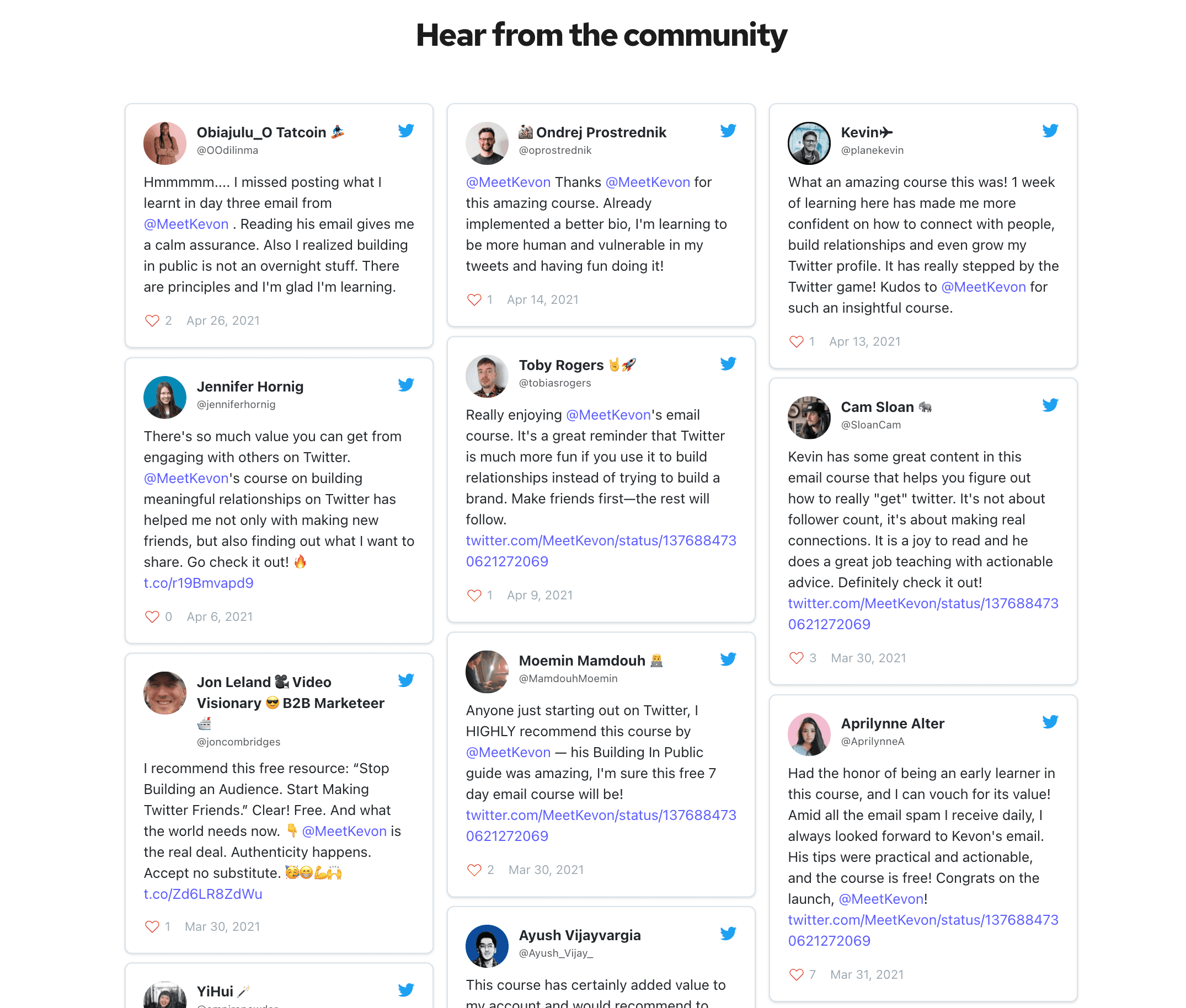
A beautiful Testimonial wall featuring tweets.
Because they were part of the creation, they didn't hesitate to help to retweet and to promote. That "network effect" was powerful.
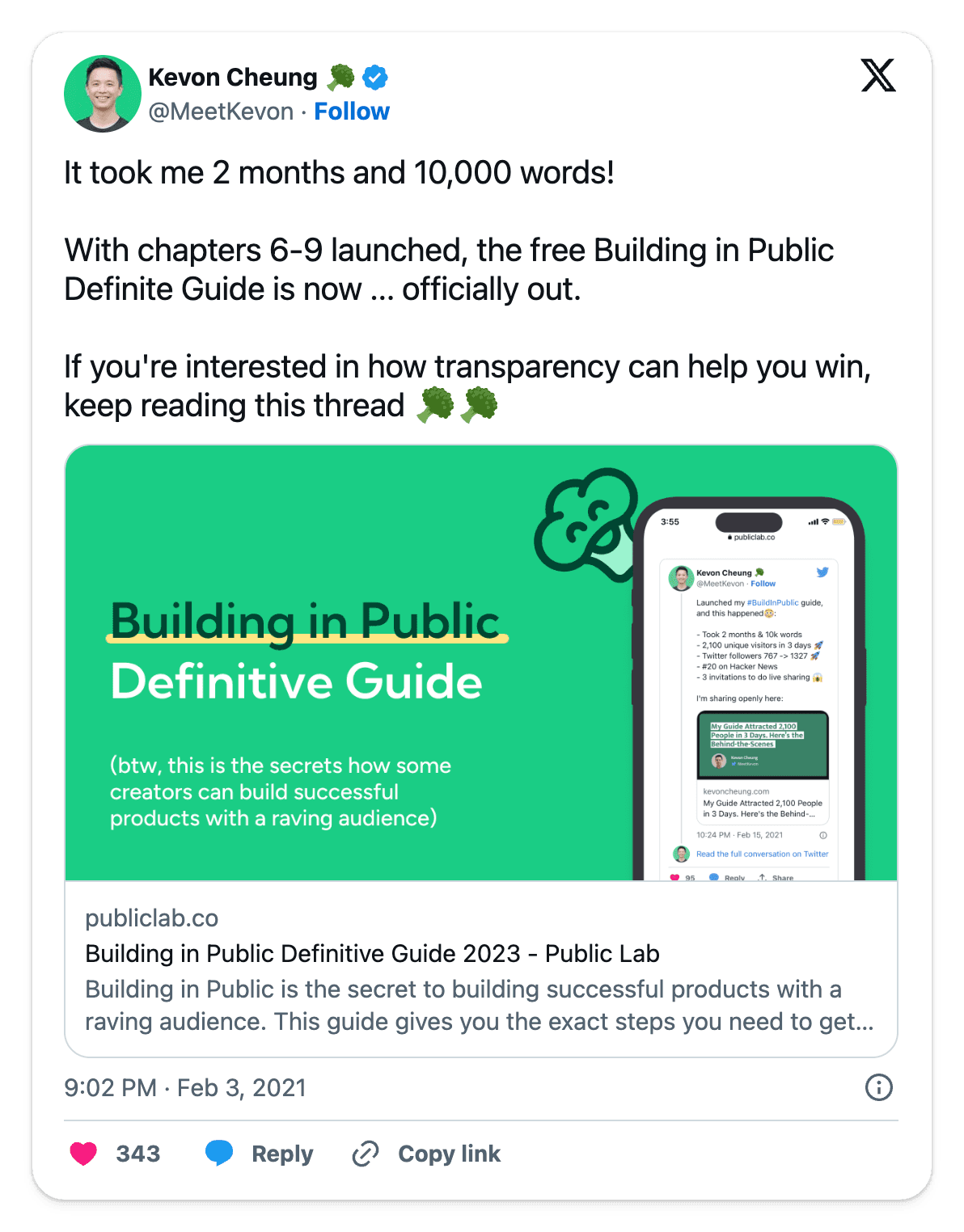
If you click to see my launch tweet's stats, I had a total of 53 Retweets + 37 Quote Tweets. That's 90 people helping out!
No big leap, just baby steps
I was too naive back then as a first-time SaaS founder. I was blinded by the idea of "building big". In retrospect, the painful experience gave me room to reflect and improve.
I went back to think about the basics of learning. When we learned English, we started picking up the alphabet, then vocabulary, then grammar, and then syntax. Learning always starts from the simplest form. Then, what made me think that I could make a big jump to build a venture-backed startup in my early entrepreneurial journey?
No way.
By building smaller products first, I not only learned the secrets behind spotting opportunities and building the right products, but I also learned the mastery in getting the right crowd onboarded before an official launch.
In the future, when I want to launch bigger products, I'll be applying the same approach.
